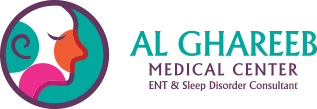Sleep Disorders
Some common types of sleep disorders include
-
Insomnia, in which you have difficulty falling asleep or staying asleep throughout the night.
-
Sleep disorders breathing and Sleep apnoea.
-
Restless legs syndrome (RLS), a type of sleep movement disorder.
-
Narcolepsy, extreme sleepiness during the day and falling asleep suddenly during the day.
-
Shift worker sleep disorder.
-
Excessive daytime sleepiness Sleep walk, sleep talk, etc.
Services Offered By Our Clinic

Full Sleep Study & Home Based Sleep Study

CPAP Titration Study

Fitting MAD for Sleep Apnea
Sleep & Snoring disorders

Diagnose and treat the following sleep disorders:
- Sleep Apnea and Obstructive Airway Diseases
- Snoring
- Upper airway resistance syndrome
- Insomnia
- Periodic limb movement syndrome
© 2019 Al Ghareeb Medical Center. All rights reserved.
